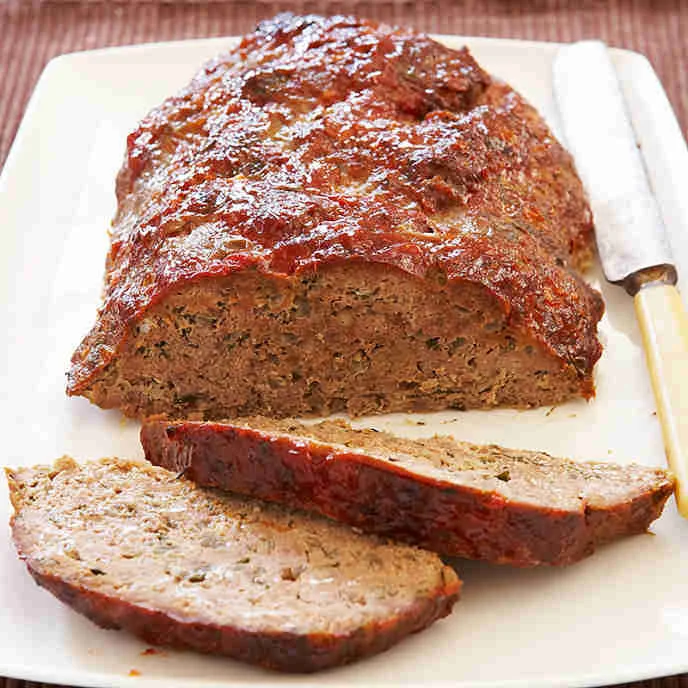Here are the Double Z, we've dubbed February "I Heart Meatloaf" month. Comfort foods like meatloaf are having a moment, especially with books like Frank Bruni's "A Meatloaf in Every Oven" to show the trendy and tasty side of this familiar dish. Plus, using grass-fed ground beef like what you find at the Double Z keeps your heart healthy too! We'll use this month to highlight a few of our favorite meatloaf recipes, including dishes developed just for the Double Z. To kick off all the meatloaf love, we asked our friend Robert Bernheim, executive director of the Holocaust and Human Rights Center of Maine at the University of Maine at Augusta and an accomplished home cook, to write up a history of the dish. Below is what he found. Happy eating!
A Brief History of Meatloaf - Robert Bernheim, Ph.D
What do the Roman-era cookbook, On Cooking (De Re Coquinaria), the Pennsylvania
Dutch, the 19th century German inventor Karl Freiherr von Drais, Fannie Farmer, and the
Great Depression have in common? They all played key roles in the development of a
beloved classic American comfort food – meatloaf.
Around the same time that Jesus walked the streets of ancient Jerusalem during the
reign of Emperor Tiberius, the Roman empire’s top chef and foodie, Marcus Gavius
Apicius, created and collected recipes for the wealthy. Some three centuries later, 500
or so of these recipes of the Roman world, including seven attributed to Apicius himself,
appeared in a collection of what may be the oldest known cookbook called De Re
Coquinaria (On Cooking). Within the pages of the surviving 9 th century edition of this
cookbook is a recipe for an ancient version of meatloaf, comprised of chopped meat,
bread soaked in wine, pine nuts, fruit and assorted seasonings. Medieval European
royal houses later added their own twists (500-1500 CE), and found creative ways to
stretch meat and other foods that were baked in pies or buried under layers of gelatin.
These precursors of meatloaf were generally not available to the masses, and remained
dishes of the ruling classes.
The modern meatloaf, however, needed further contributions to take its present form,
and it began with immigration. When German immigrants arrived in and around
Philadelphia and areas of New Jersey and the Delmarva Peninsula in the 17 th and 18 th
centuries, they brought with them a one-pan recipe for leftover meat scraps called
Pannhaas (pan rabbit). A mashup of meat, flour of various types, and spices, Scrapple
became a staple of the so-called Pennsylvania Dutch from Washington, DC to southern
New York.
The judicious use of meat scraps was not limited to a geographic region of the United
States. The man who brought the Laufmaschine (the Running Machine), an archetype
of today’s bicycle to the world, made meat grinding possible for every household. Baron
von Drais (1785-1851) invented a table-top, hand-cranked simple device to turn even
the toughest and least favorable cuts of meat into useable portions without the help of a
butcher or the work of laborious chopping. The meat grinder, in addition to the mass
production of a wide variety of meat products through large-scale slaughterhouses at
the end of the 19 th century in the United States, made dishes with all kinds grades of
meat both readily available and popular.
The late 1870s saw the first widespread appearances of recipes resembling modern
meatloaf. Chopped meat – in all likelihood beef – salt, pepper, onion, milk-soaked bread
and eggs (the latter a panade) were mashed together to form a loaf and then baked.
Such dishes, however, were not generally eaten at dinner, but rather for breakfast,
especially in New England. In the late 19 th century, variations of this recipe included veal
and pork as the meat of choice, and began appearing in mass-produced form in such
classics as The Boston-School Cook Book by Fannie Farmer.
It was not until the Great Depression (1930s) and the post-World War Two era of the
Truman and Eisenhauer years (post-1945 and through the 1950s) that meatloaf
became an American staple. When times were economically tough, and meat became a
protein either in limited supply or greatly out of reach of most, Americans used meatloaf
as a way to make protein go further. As New York Times journalists Frank Bruni and
Jennifer Steinhauer note in their 2017 book, A Meatloaf in Every Oven: Two Chatty
Cooks, One Iconic Dish and Dozens of Recipes – From Mom’s to Mario Batali’s,
meatloaf became the emblem of wartime ingenuity with such recipes as “Vitality Loaf” –
a combination of beef, pork and liver, and a creative crown of the Cold War. In 1958, for
example, Betty Crocker’s 365 Ways to Cook Hamburger had no fewer than 70 meatloaf
dishes.
Today, the reach of the world wide web makes meatloaf, in all its permutations, a staple
of American comfort cuisine.
Selected References:
https://www.bonappetit.com/story/history-of- meatloaf
https://www.theatlantic.com/health/archive/2011/09/from-budget- fare-to- culinary-
inspiration-the- history-of- meatloaf/245265/
https://www.cooksillustrated.com/features/8578-a- brief-history- of-meatloaf- and-how- to-
make-it- extra-meaty

